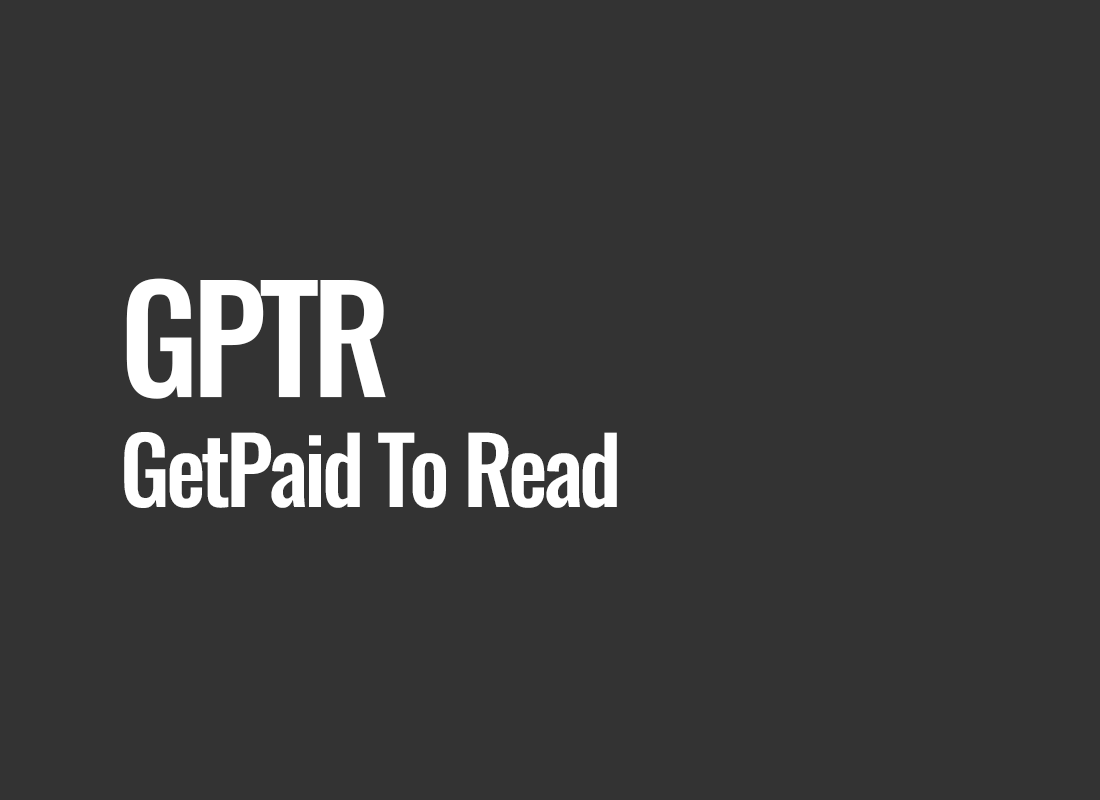GPTR (GetPaid To Read)
Technology is constantly evolving, and one of its intriguing aspects is GPTR, which stands for "GetPaid To Read." This acronym is gaining popularity and is a key part of the modern e-commerce, marketing, business, and IT landscape. Simply put, GPTR allows users to earn money or receive rewards for reading online content. Over the past few years, this technology has not only become an innovative advertising tool but also an engaging way to benefit various industries.
In this article, we invite you to delve into the world of GPTR. We'll analyze how this technology works precisely and the advantages it offers in different aspects of e-commerce, marketing, business, and IT. We will learn how GPTR is changing the rules of the digital environment and why this innovative form of online communication is worth attention. We will trace specific examples of GPTR in practice and discover the potential results that can be achieved using this technology. As we dive into GPTR, we will uncover its potential for the future of e-commerce, marketing, business, and IT.
How does GPTR work?
To better understand how GPTR (GetPaid To Read) operates, it's worth considering the fundamental mechanisms of this technology. GPTR is based on a straightforward yet effective model where users are compensated for reading online content. This can be in the form of money, loyalty points, vouchers, or other rewards that grab user attention and encourage them to engage in online content.
In practice, GPTR platforms offer users access to various content, such as advertisements, articles, product reviews, and other information. Users can read this content and get rewarded for their engagement. For many, GPTR becomes an additional source of income or a way to obtain attractive rewards.
Examples of GPTR in e-commerce, marketing, and business
Using GPTR in e-commerce to increase conversions:
E-commerce platforms can use GPTR as a tool to boost conversions. Online stores can pay users for reading product descriptions, reviews, or promotional materials, aiming to convey essential product information to potential customers and persuade them to make a purchase. For users, the possibility of earning by reading becomes an added incentive, potentially influencing the choice of a particular store, resulting in increased sales and customer loyalty.
Marketing campaigns based on GPTR:
GPTR is becoming a crucial part of marketing strategies. Companies create specific content that pays users to read, not only attracting viewer attention but also allowing businesses to collect data and analyze user behavior. GPTR-based campaigns are often more engaging since users see a direct financial benefit. Companies can also adapt their marketing strategies based on user feedback, enhancing the effectiveness of advertising actions.
GPTR's impact on profits and efficiency of online businesses:
Online businesses using GPTR can reap numerous benefits. Firstly, GPTR attracts a higher number of users, increasing platform visibility and popularity. This can subsequently lead to greater profits through advertising and product sales. Moreover, GPTR can be a tool for market research, allowing companies to better understand their target audience and adjust their offerings. It's also worth noting that GPTR can motivate users to leave reviews, comment on content, or actively participate in online communities, building engagement and loyalty.
It's worth noting that GPTR has the potential to change the way consumers and companies communicate online. It's an innovative approach to online interaction that leverages the attention economy to benefit both users and entrepreneurs. Let's now move to the examples section to closely inspect specific GPTR applications.
GPTR Examples
Example 1
Imagine an online store specializing in cosmetics. By introducing a GPTR program, this store offers users the opportunity to earn by reading product reviews. Users, in addition to accessing vital cosmetic information, receive loyalty points that can be used for future purchases, encouraging them to explore the store's offerings and resulting in increased conversion and customer loyalty.
Example 2
A marketing agency prepares a promotional campaign for a new product. They produce articles detailing the benefits of using this product and offer users compensation for reading them. The campaign quickly goes viral, as users are keen to share content that brings them financial gains. This not only boosts brand awareness but also attracts new customers.
Example 3
A popular social networking site introduces a GPTR program where users receive points for reading other users' posts. These points can be exchanged for rewards or used as discounts in partner stores. This not only encourages users to actively participate in the site but also attracts advertisers who see the potential in a large number of active users.
Conclusion
GPTR (GetPaid To Read) represents a fascinating element of the digital ecosystem that evolves with technological advancement. It's a technology that not only grabs user attention but also benefits various sectors, including e-commerce, marketing, business, and IT. For e-commerce, it means higher conversions and customer loyalty. For marketing, it's a tool for creating engaging campaigns. For online businesses, it's an opportunity for increased profits and better market understanding.
The prospects for GPTR development are promising as this technology becomes more accessible and popular. However, challenges associated with GPTR, such as ensuring system fairness and effectively managing GPTR programs, should be remembered. Nevertheless, GPTR remains a captivating example of how technology can impact how consumers and companies communicate online. All that remains is to wait and see how GPTR will shape the digital world's future.




